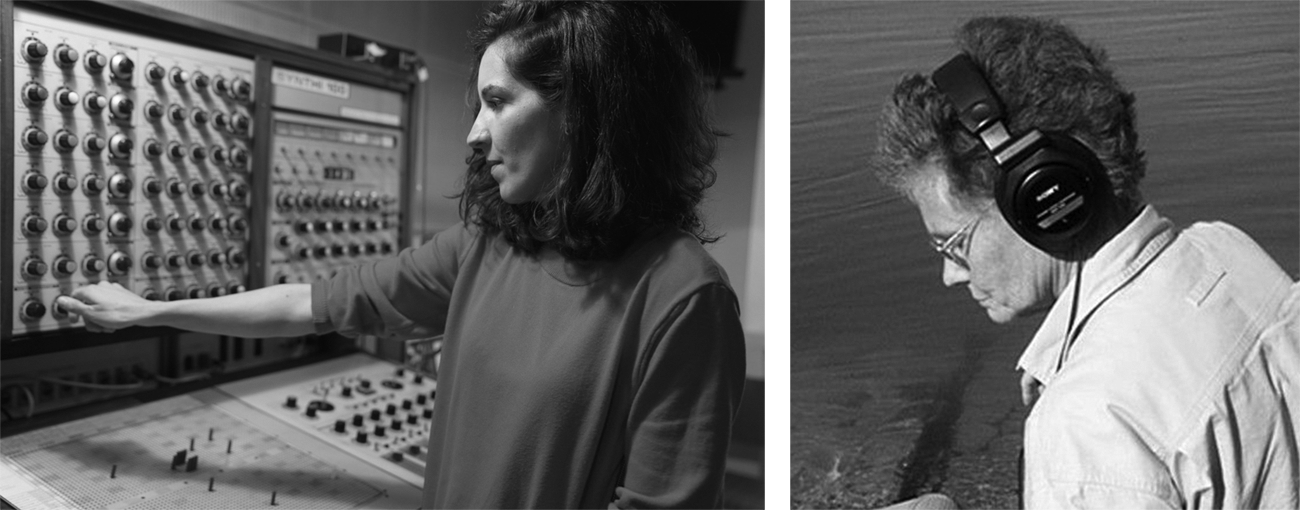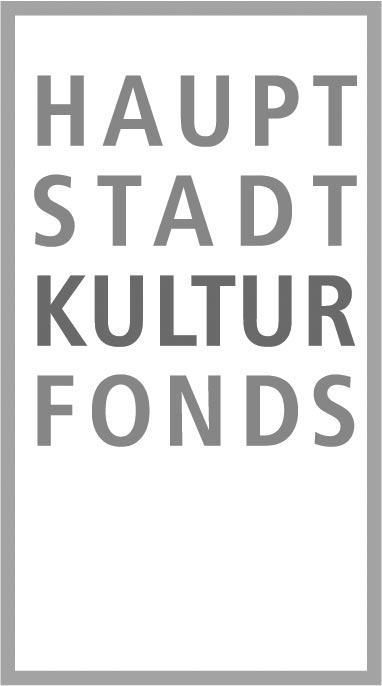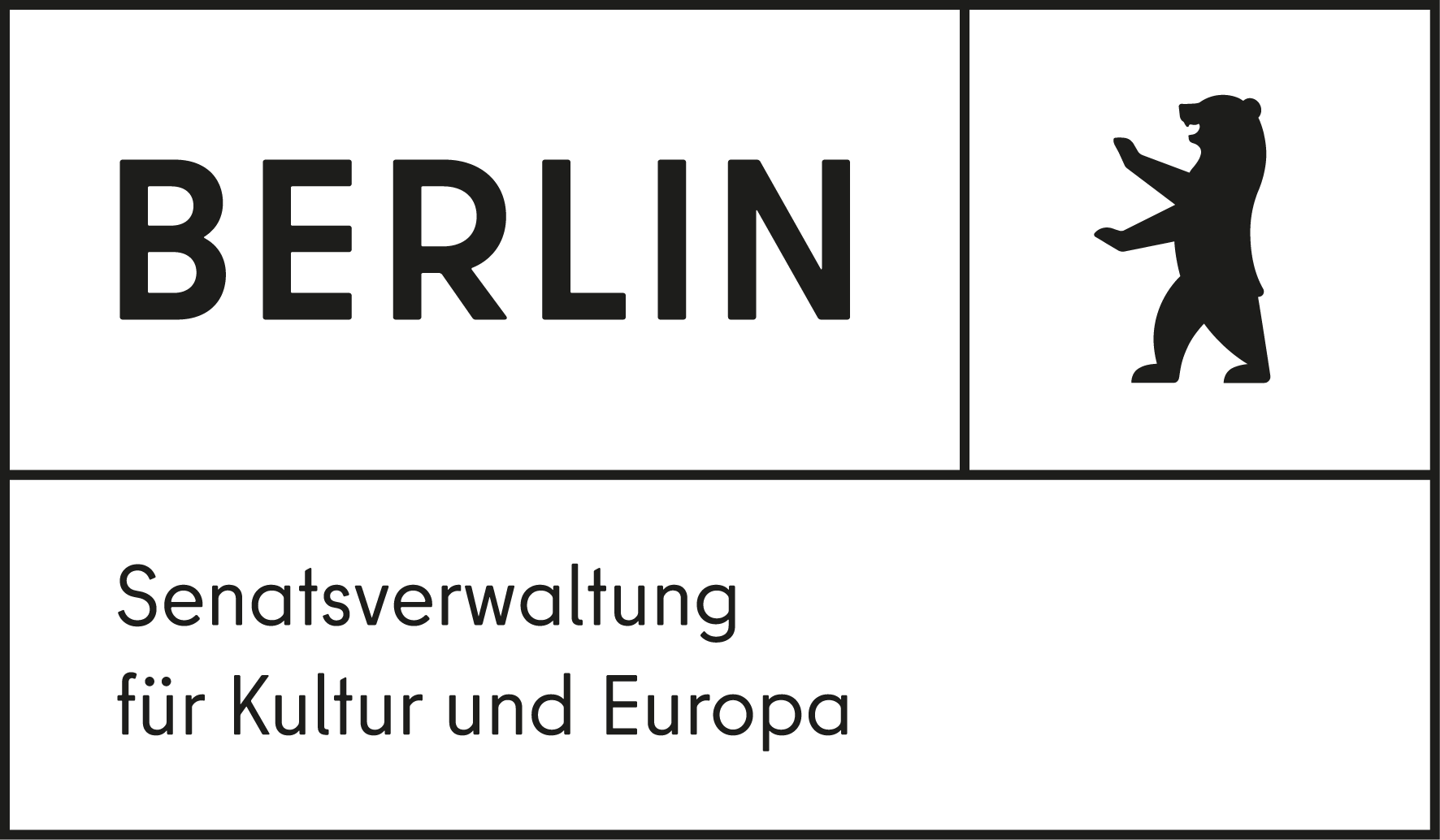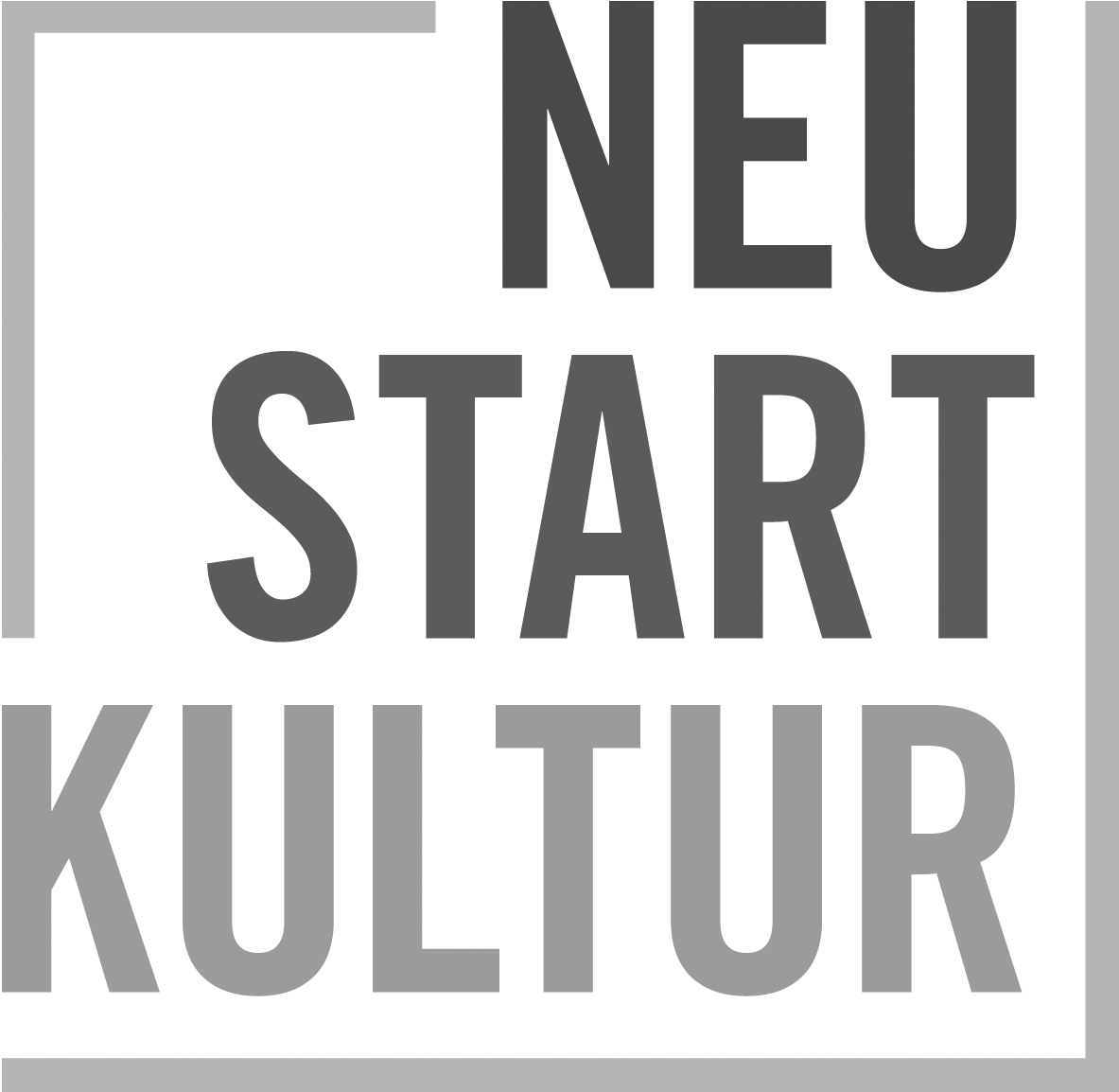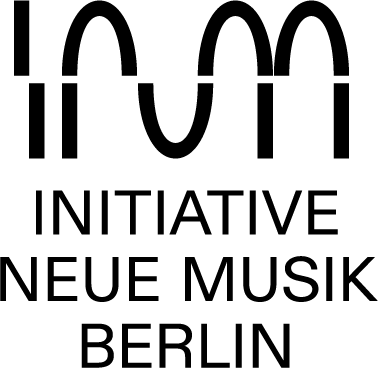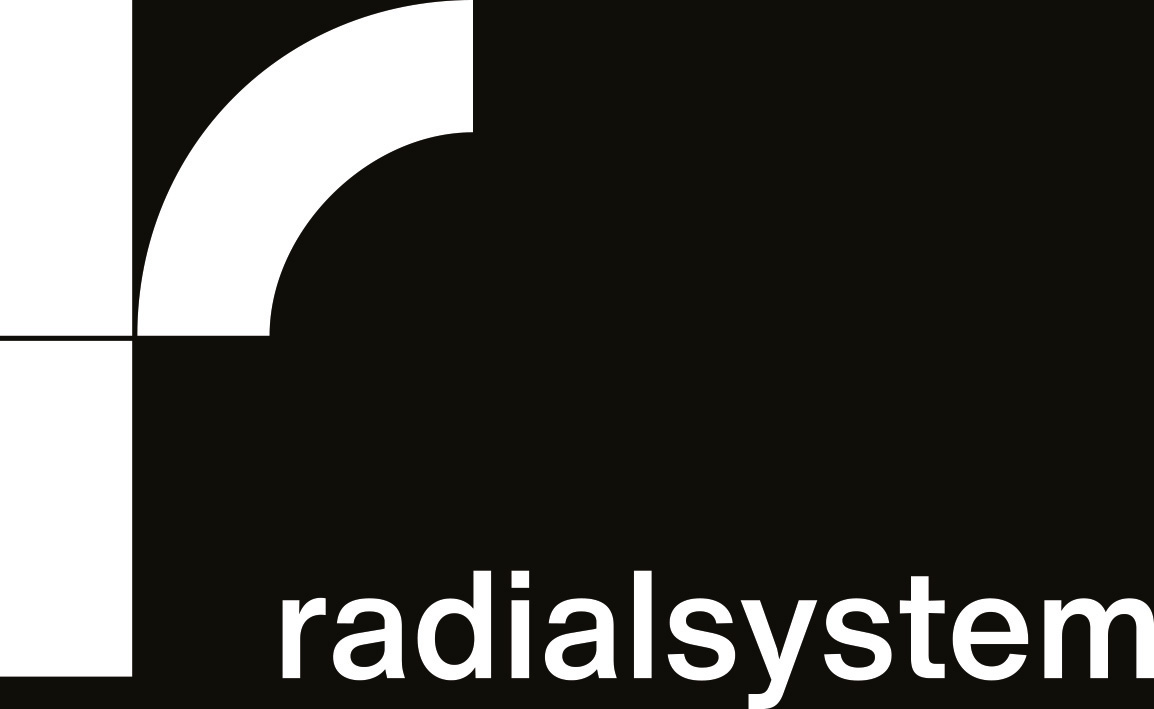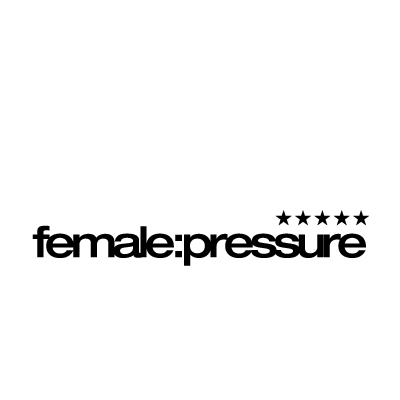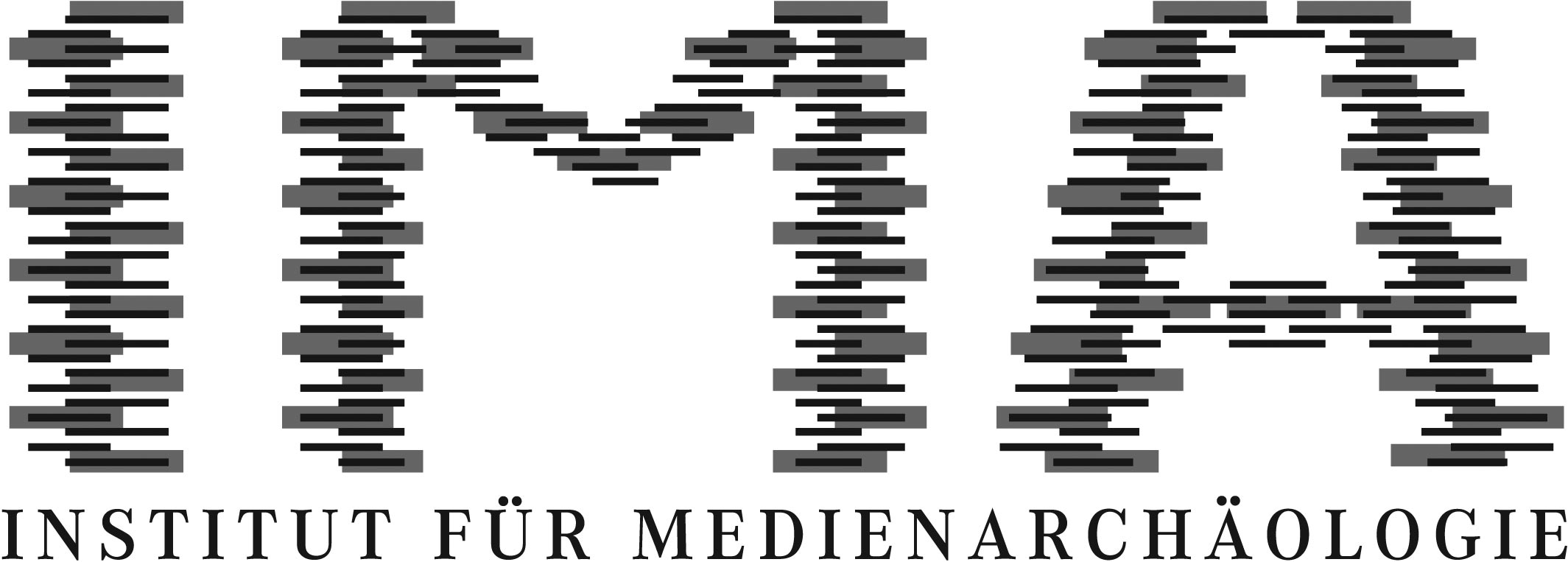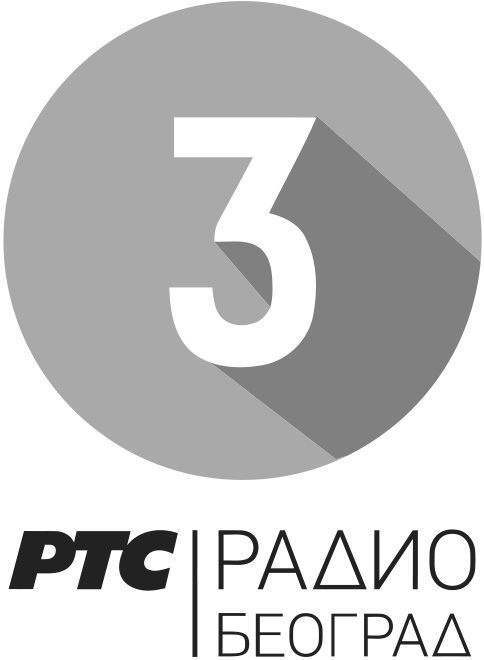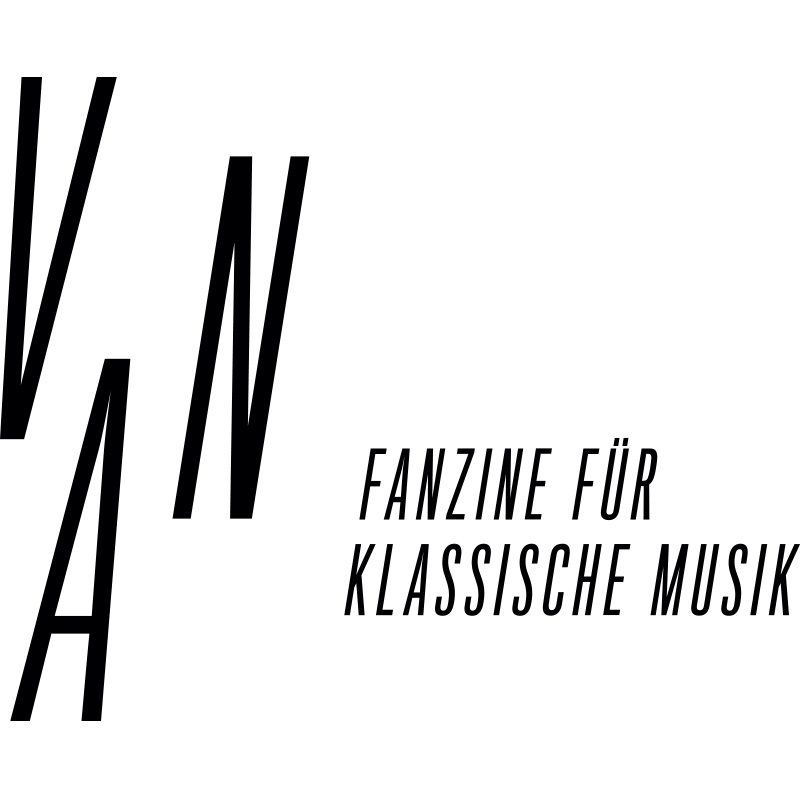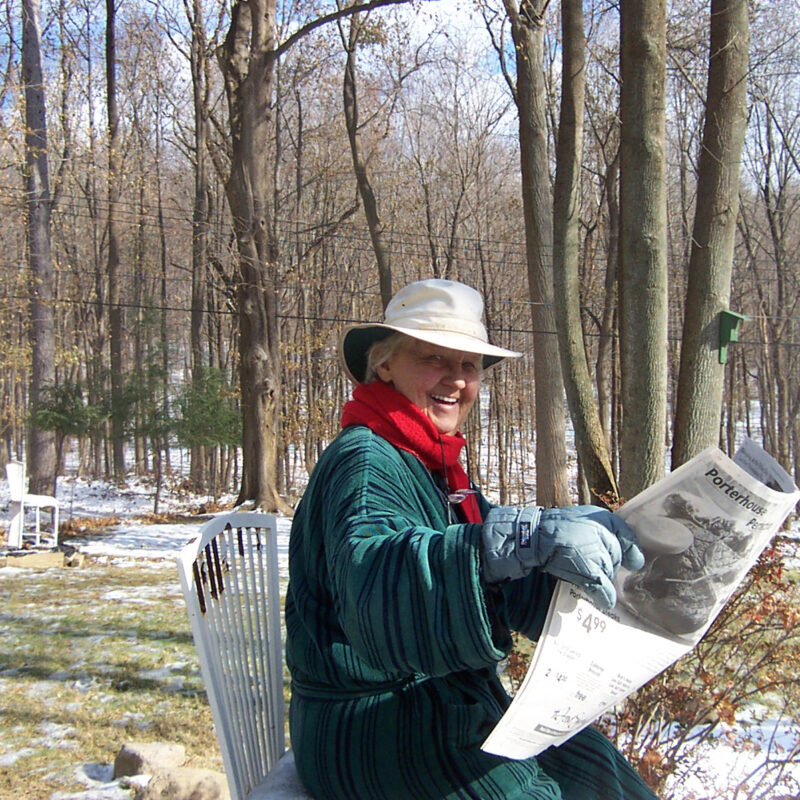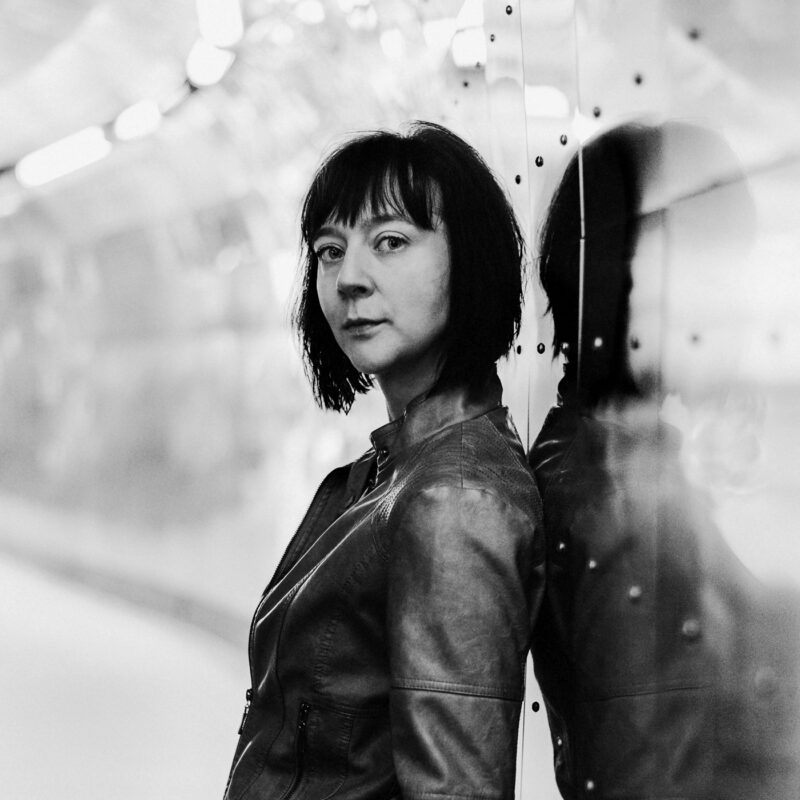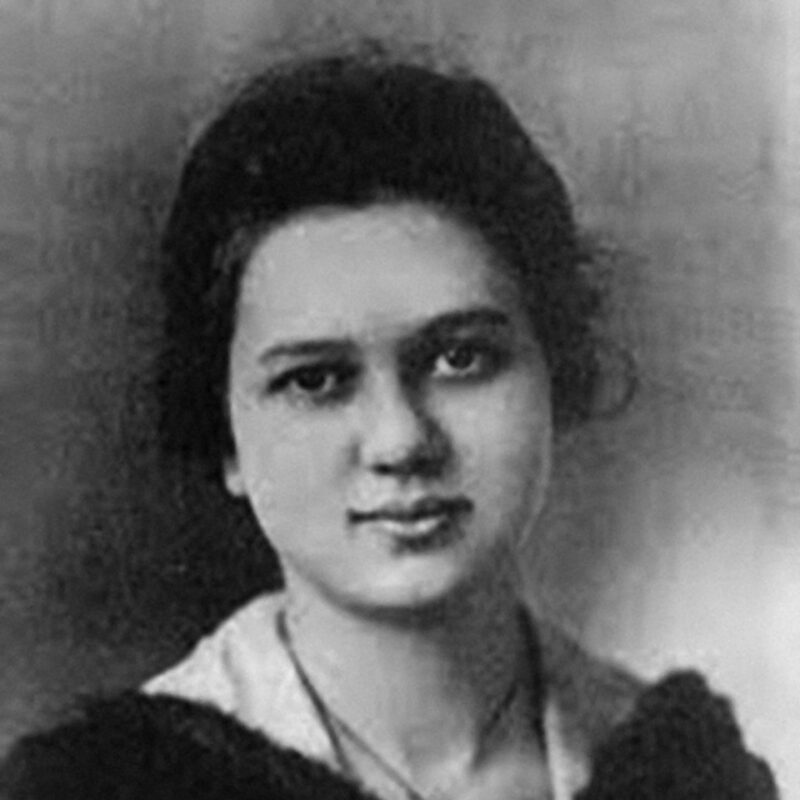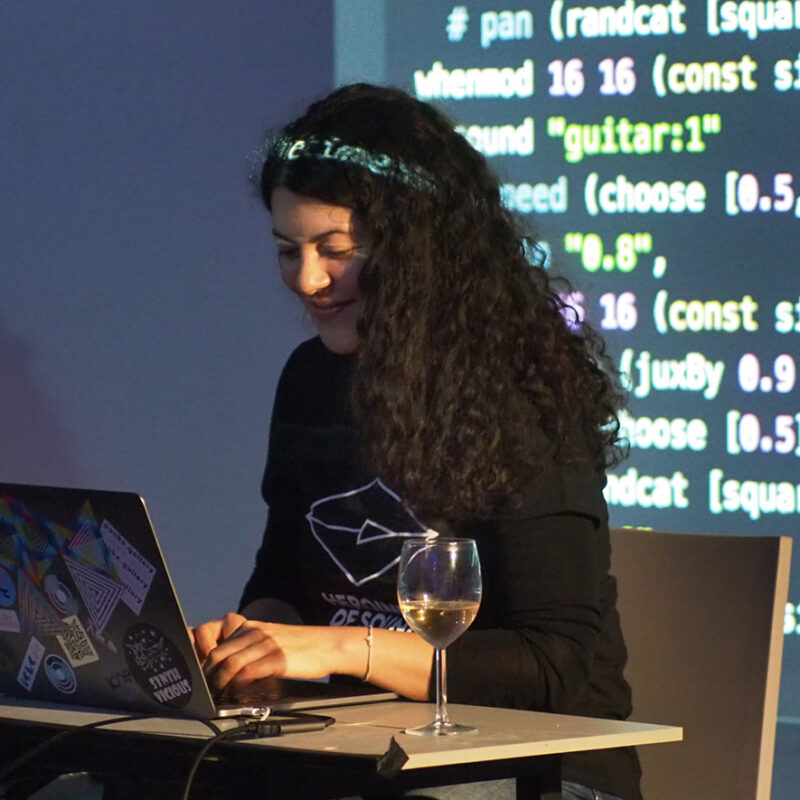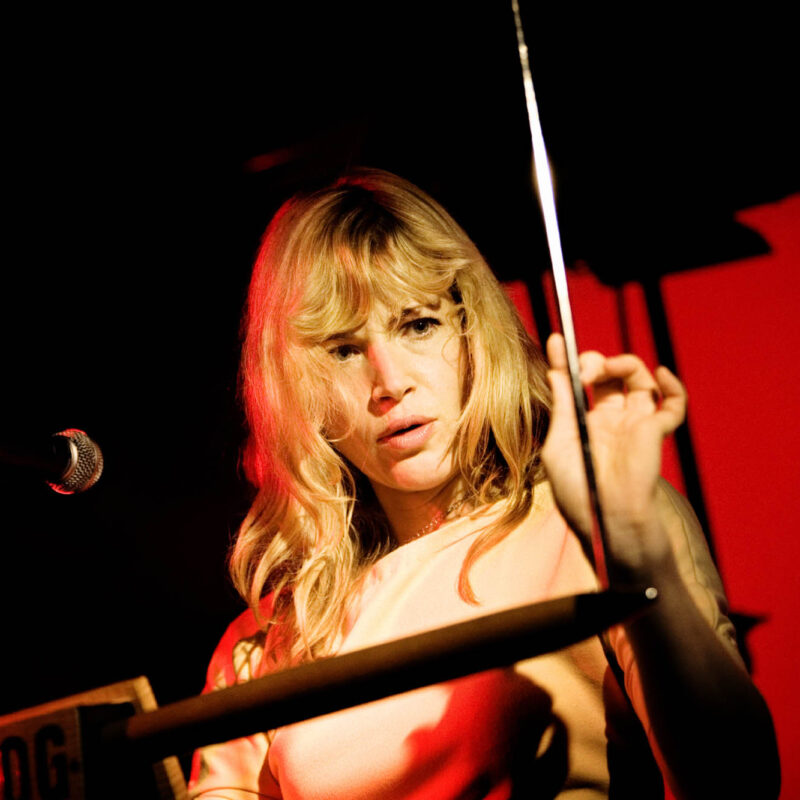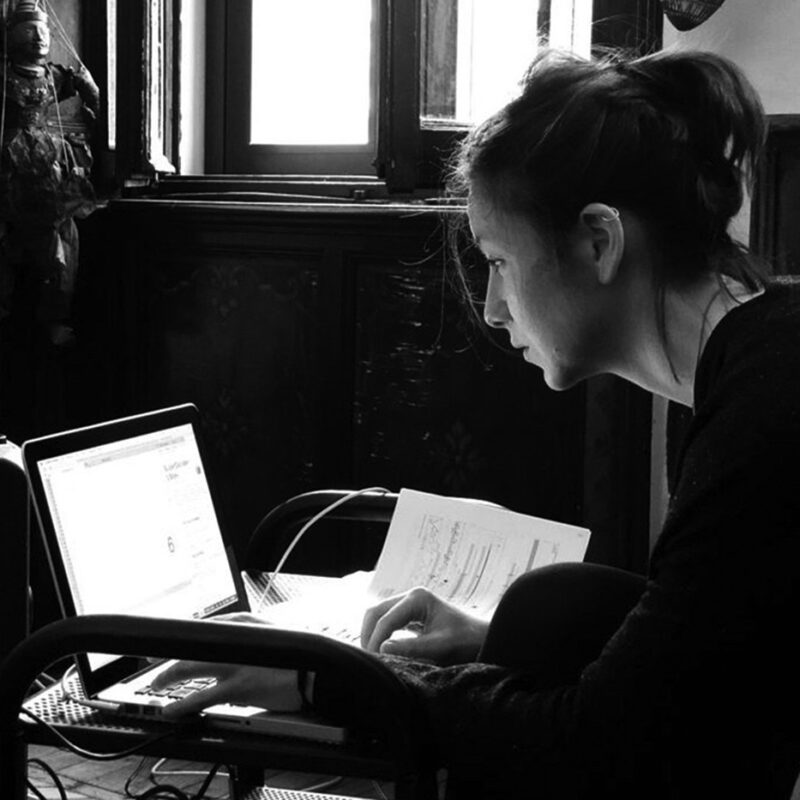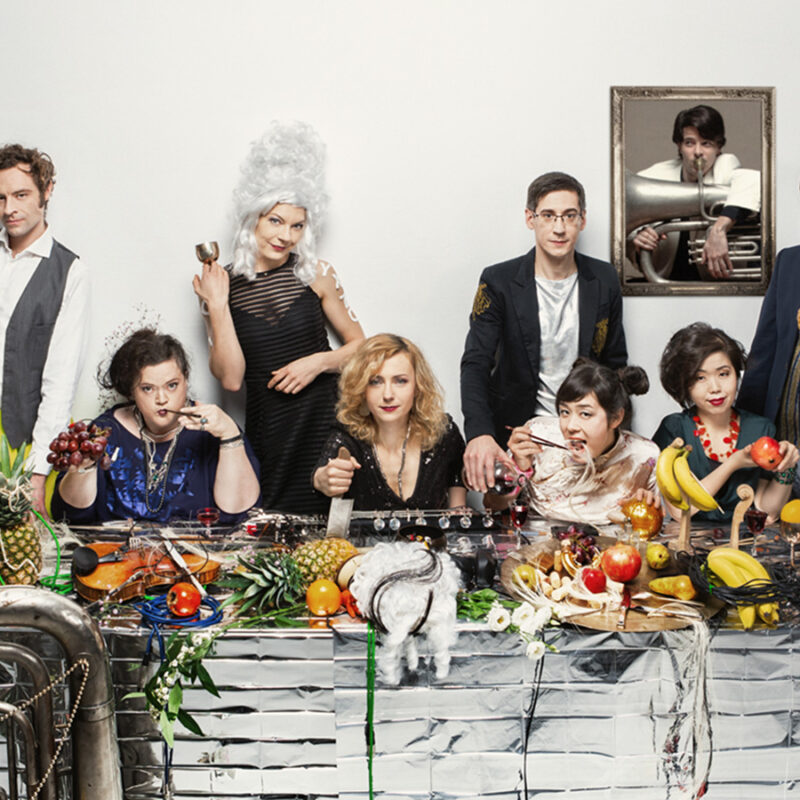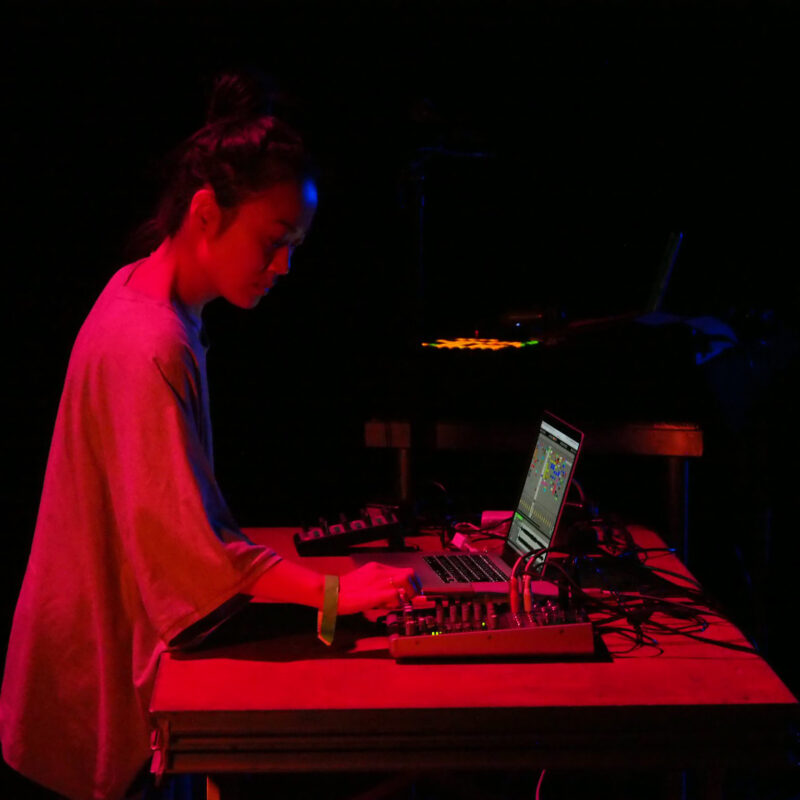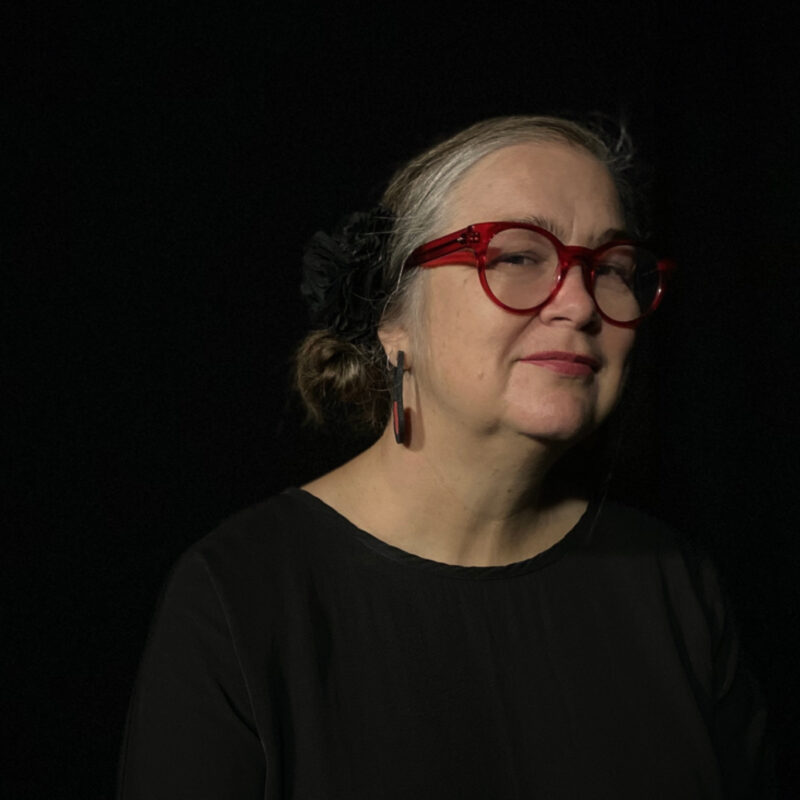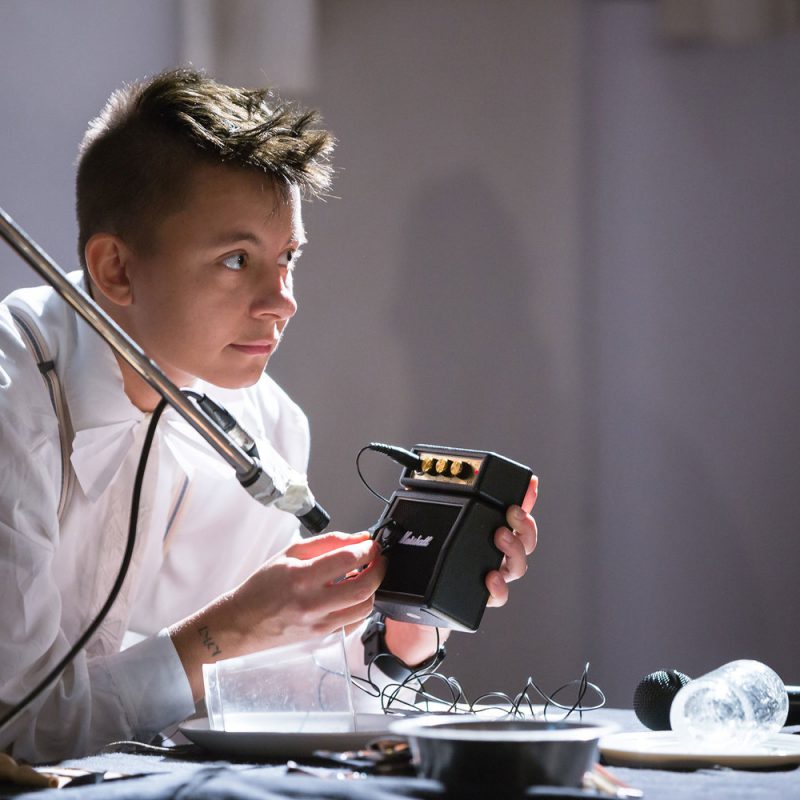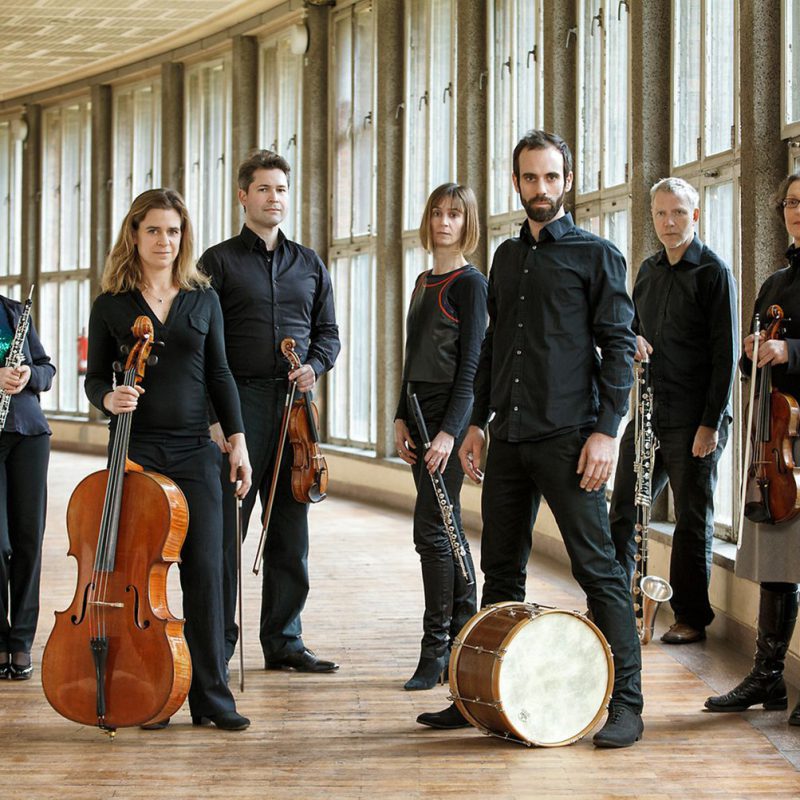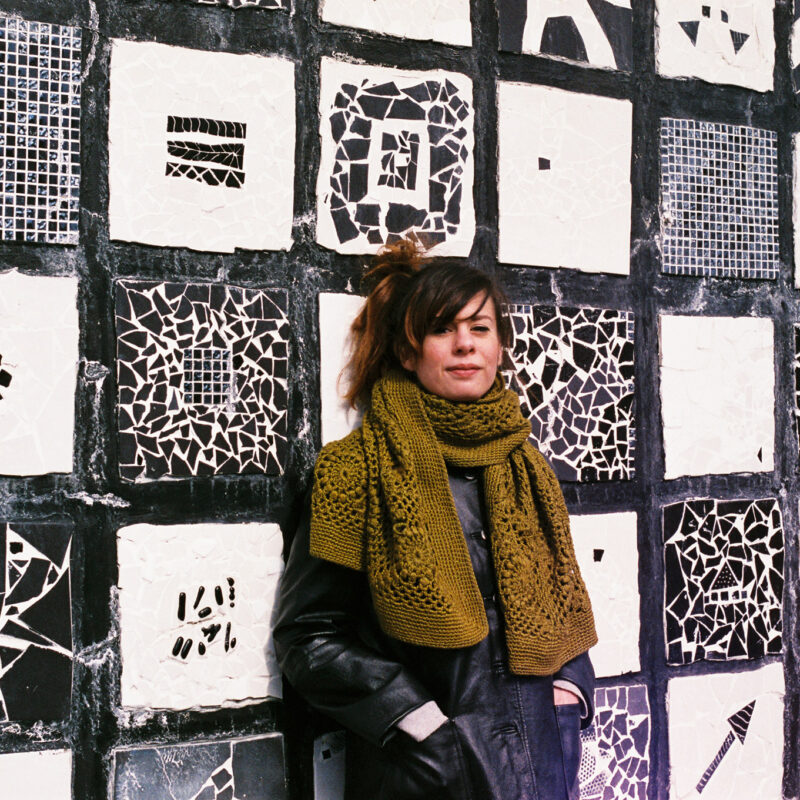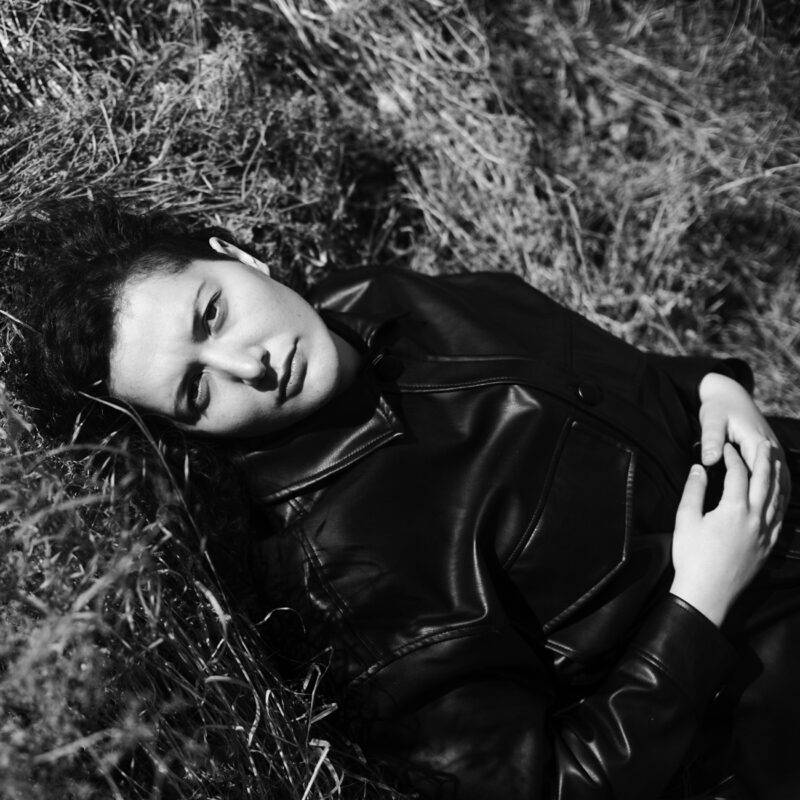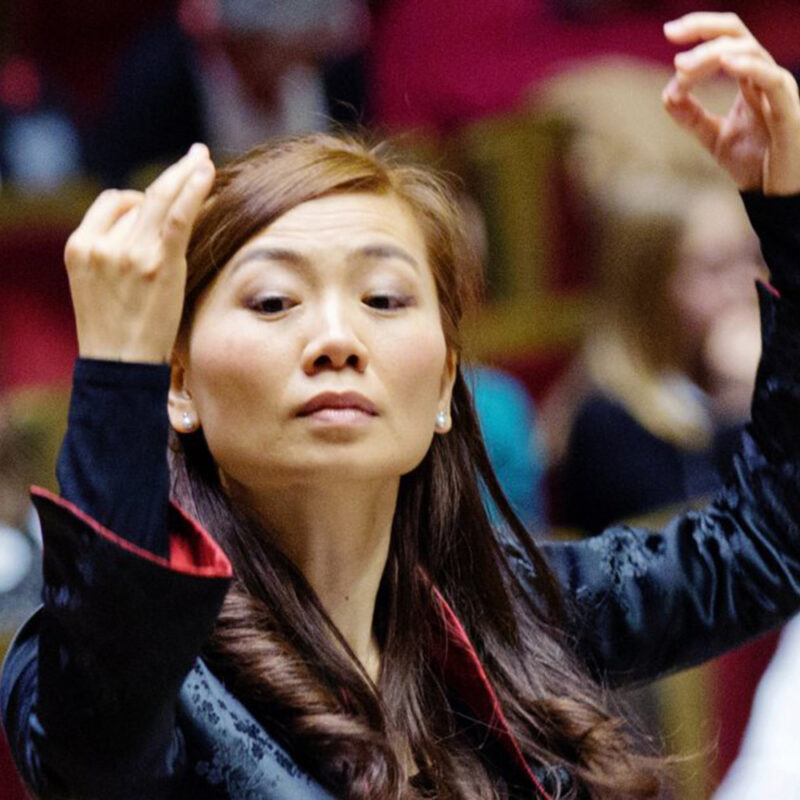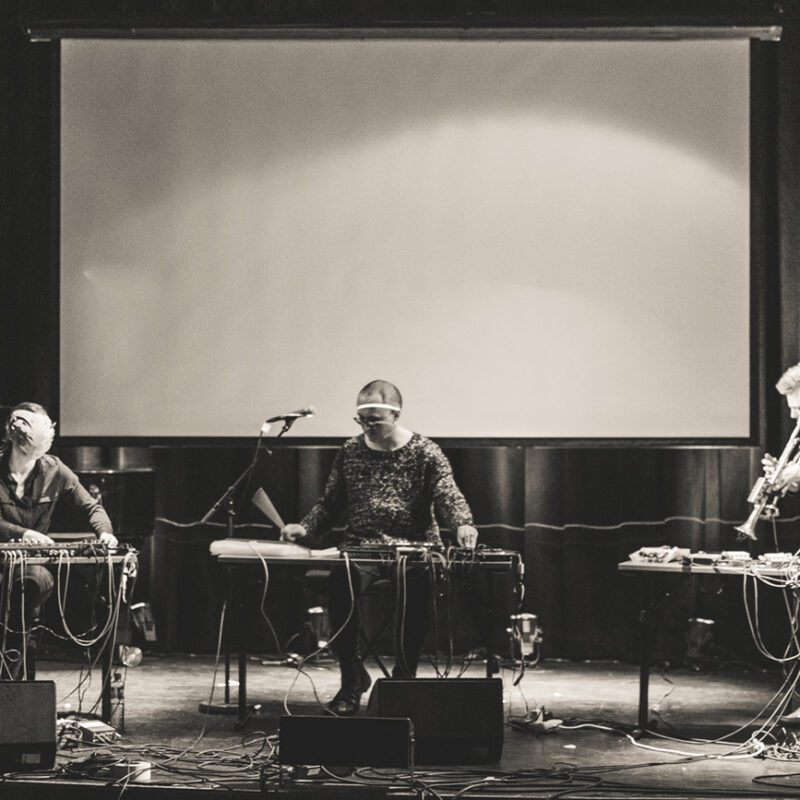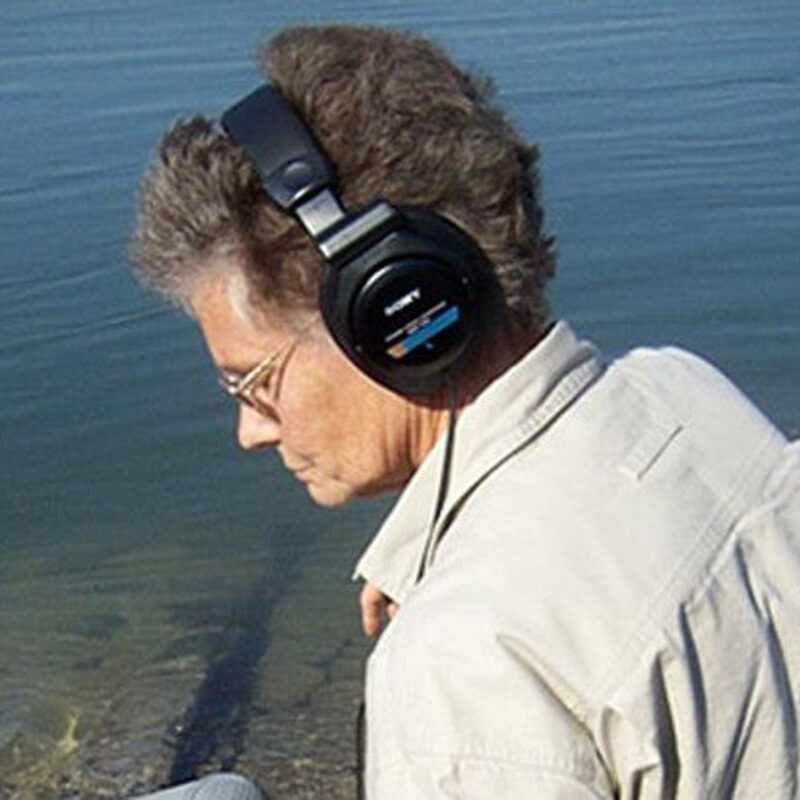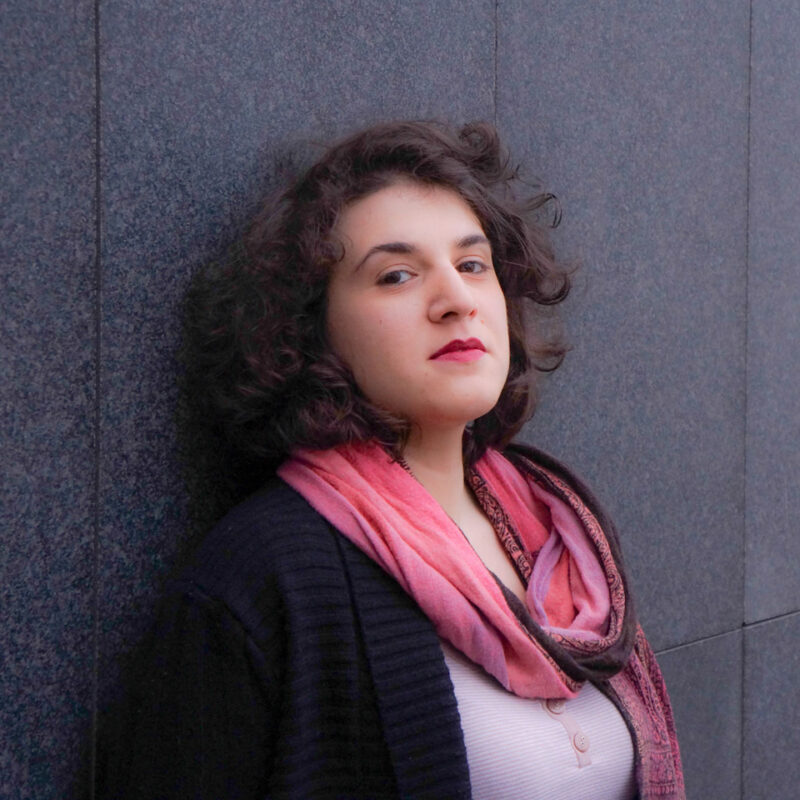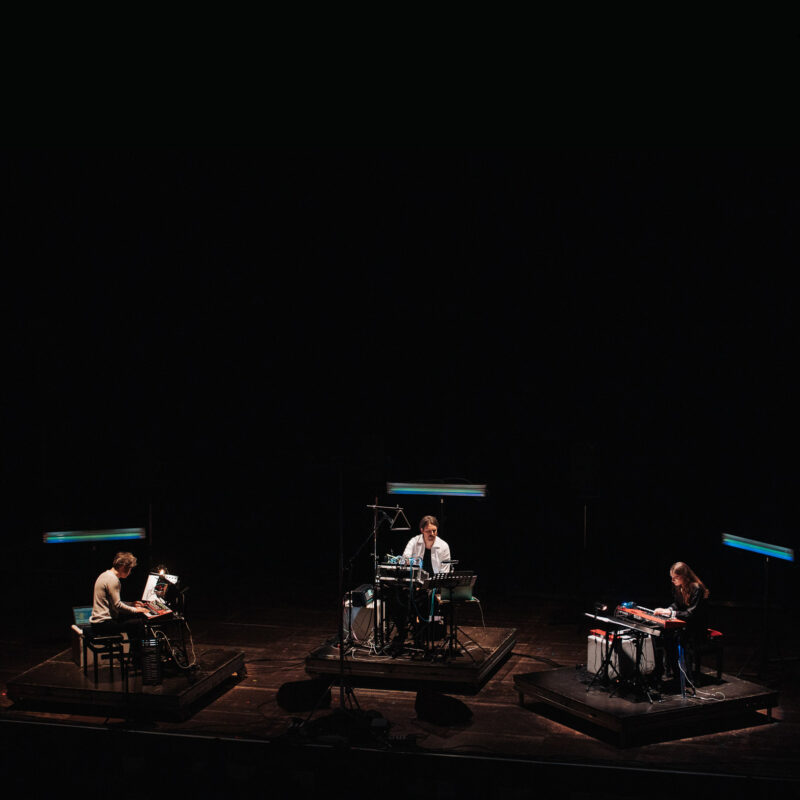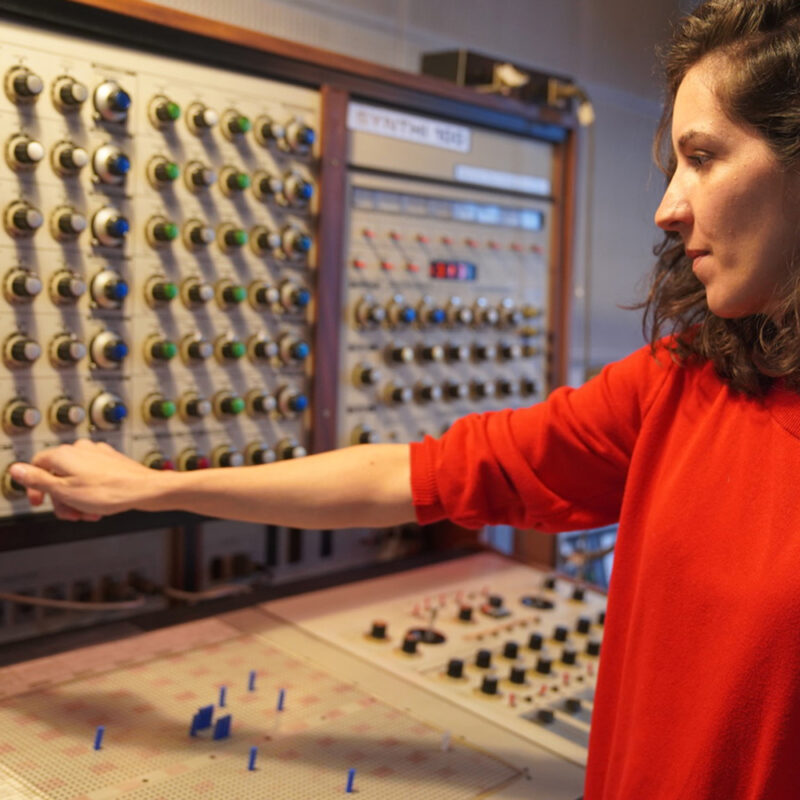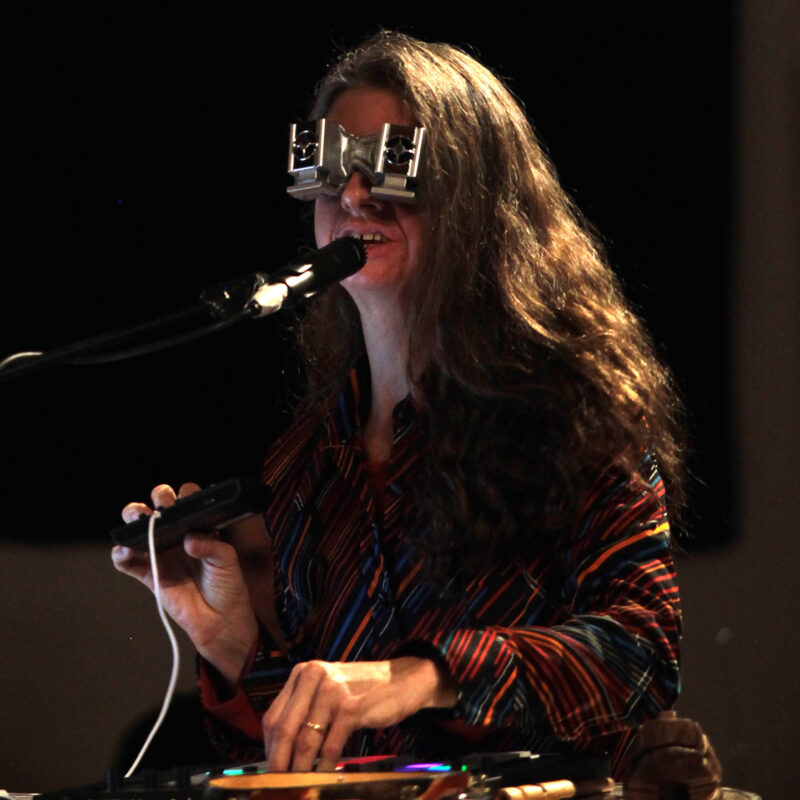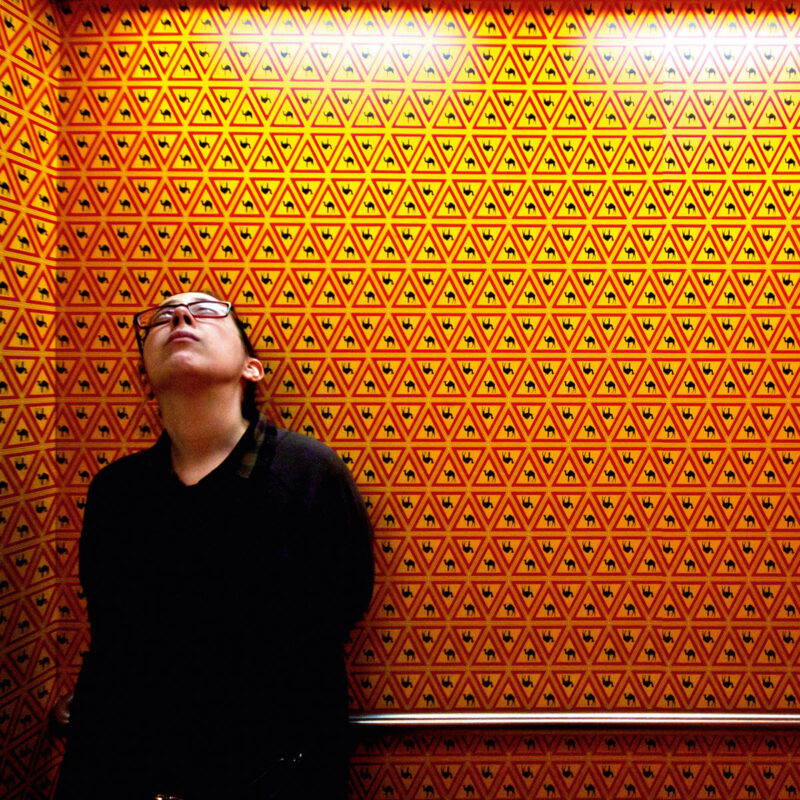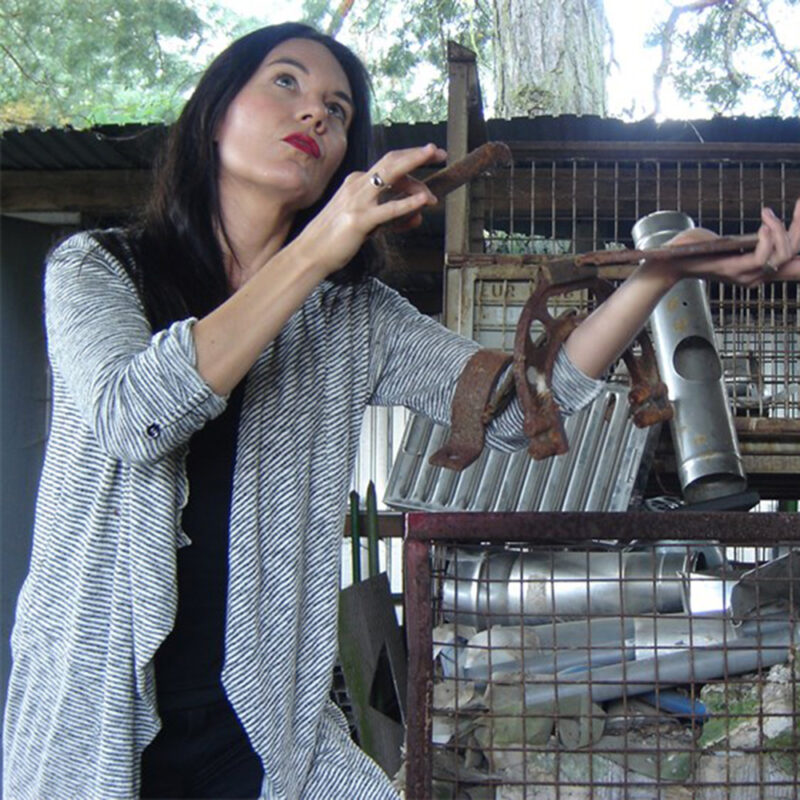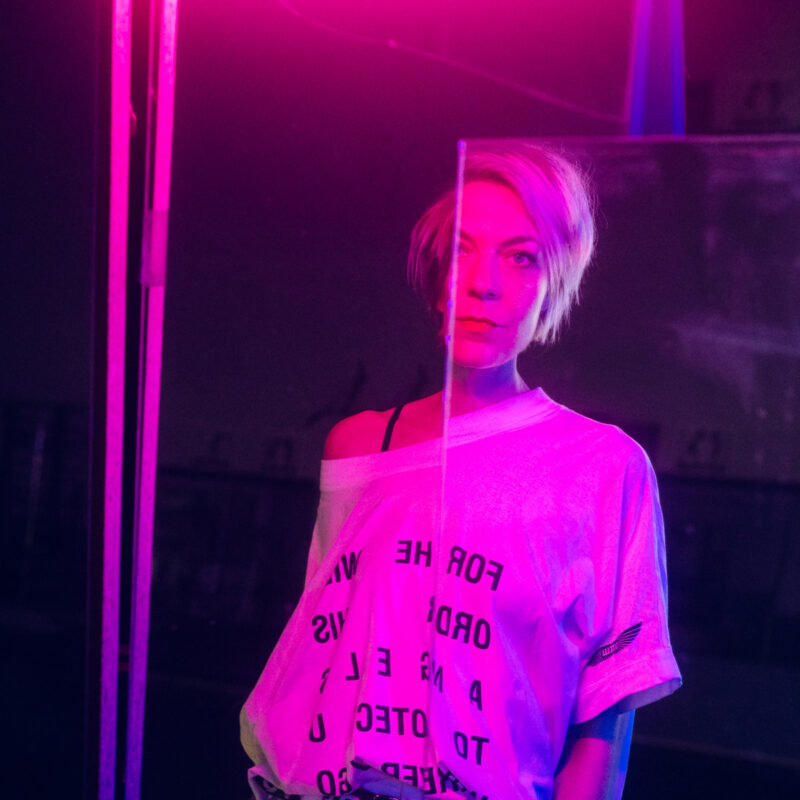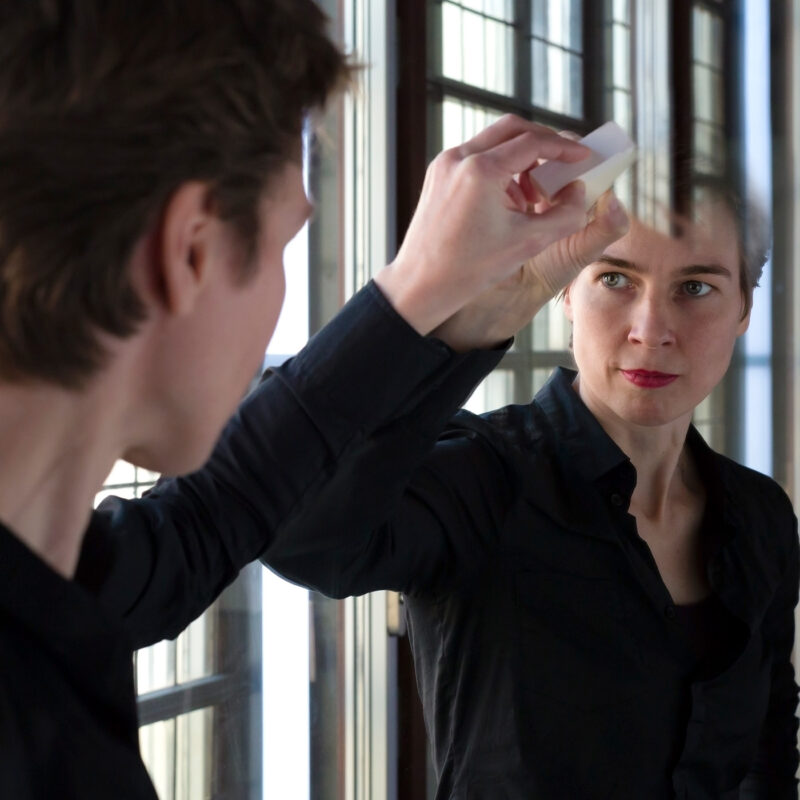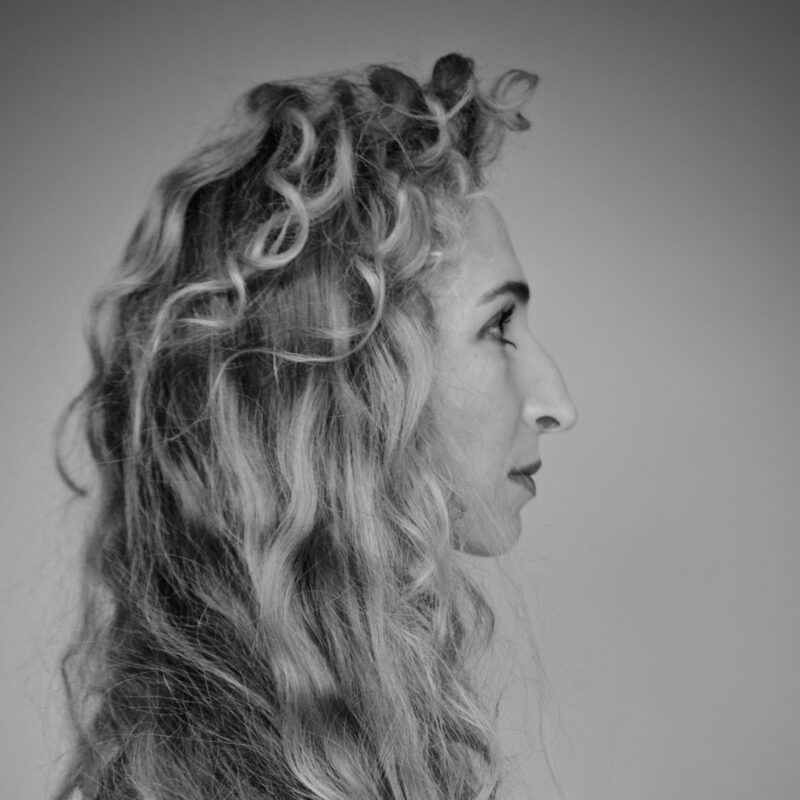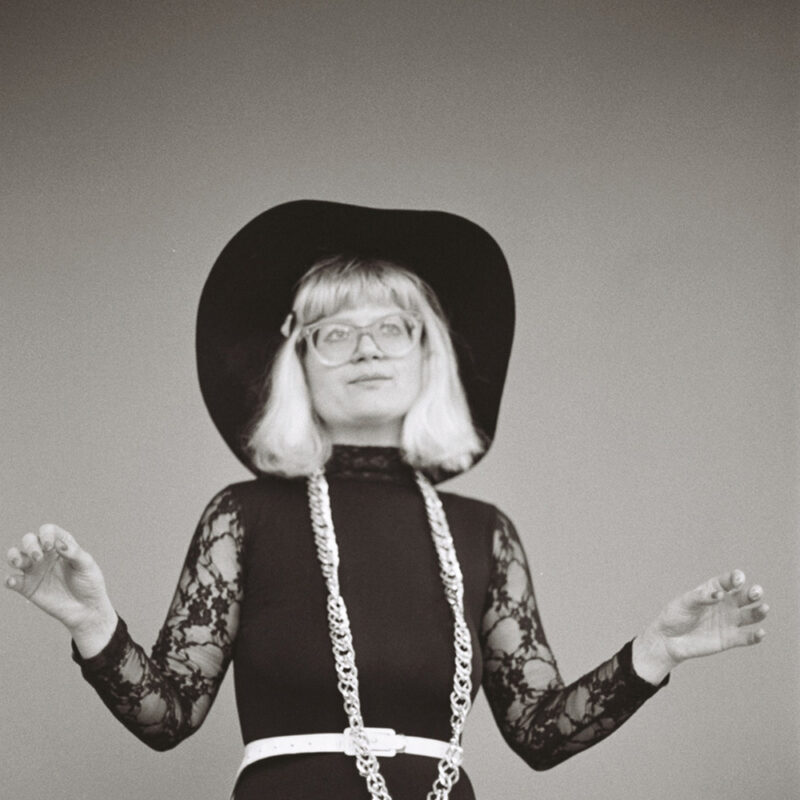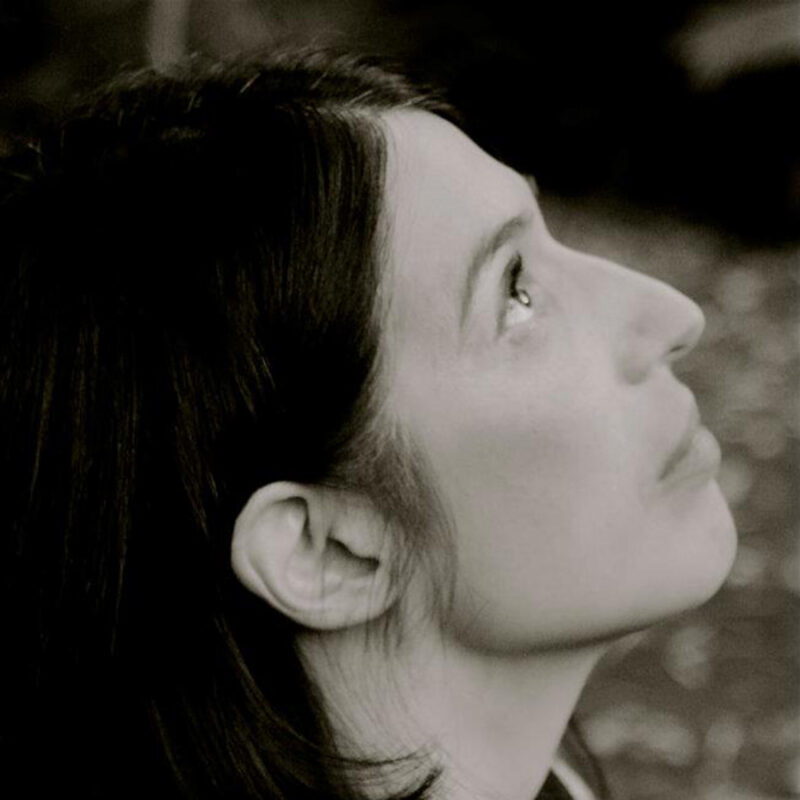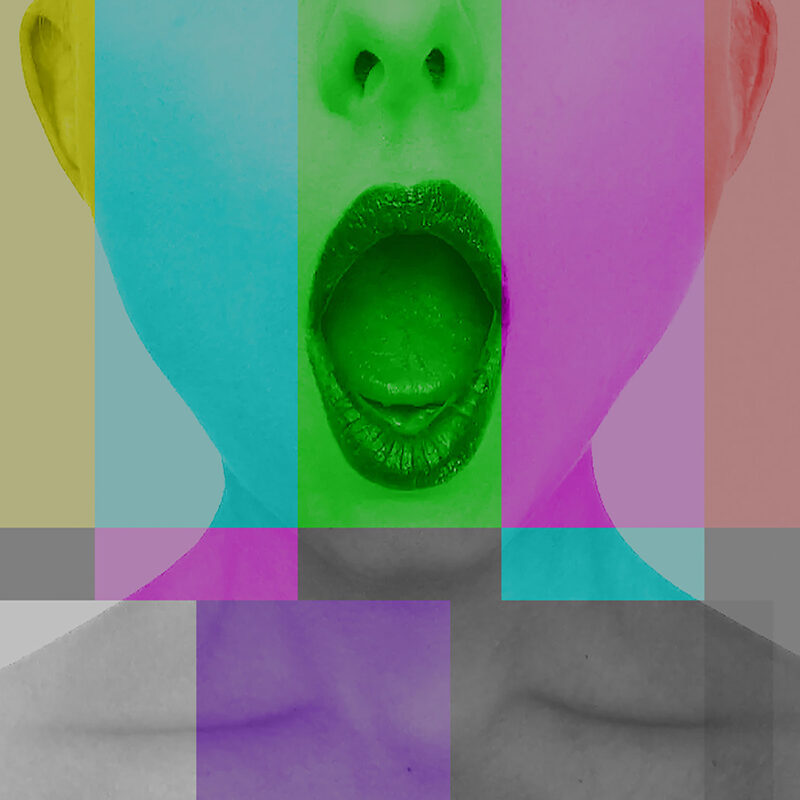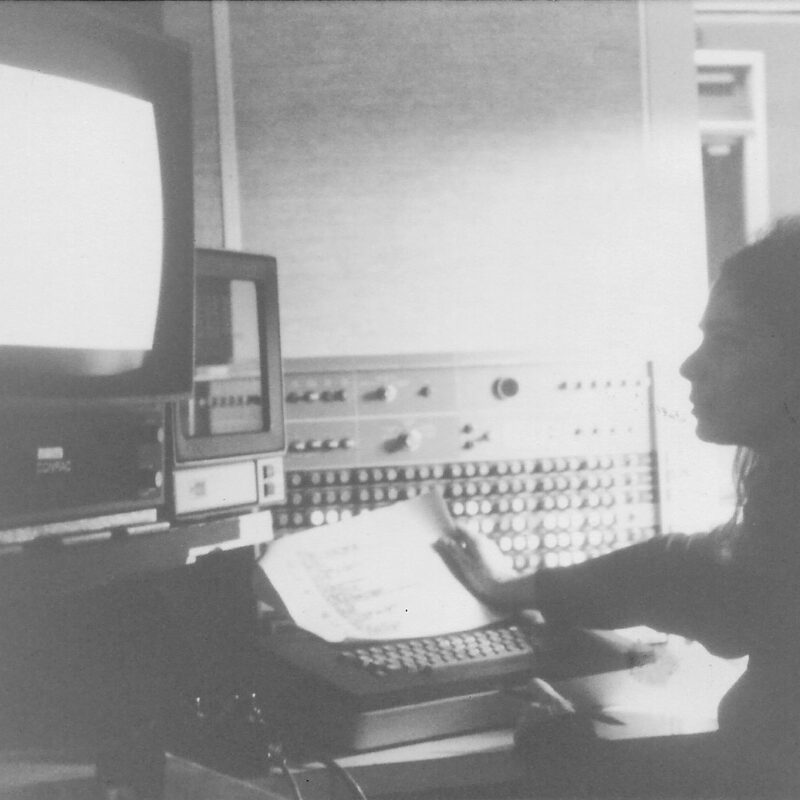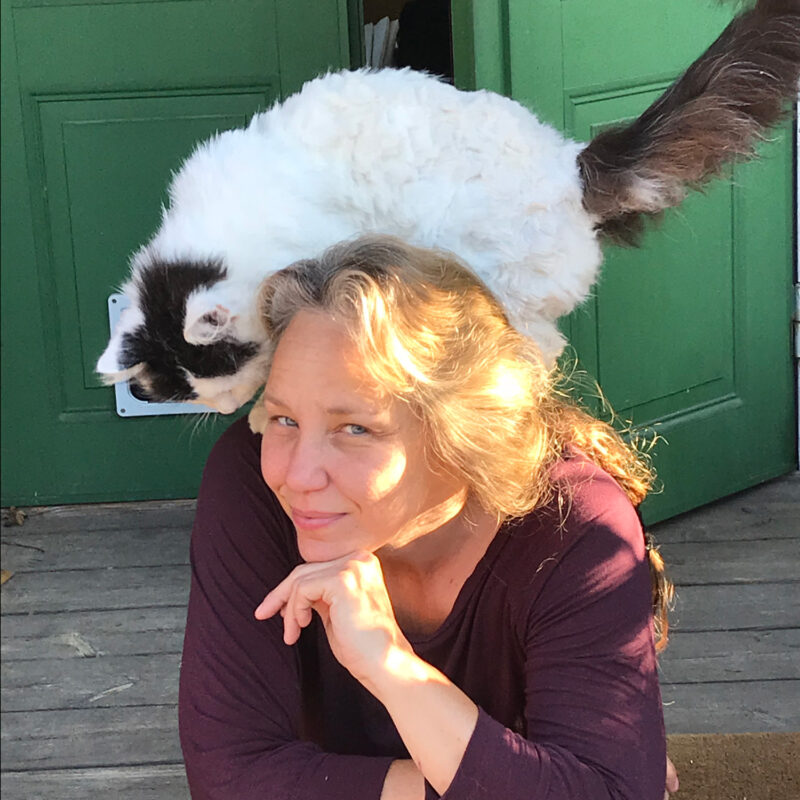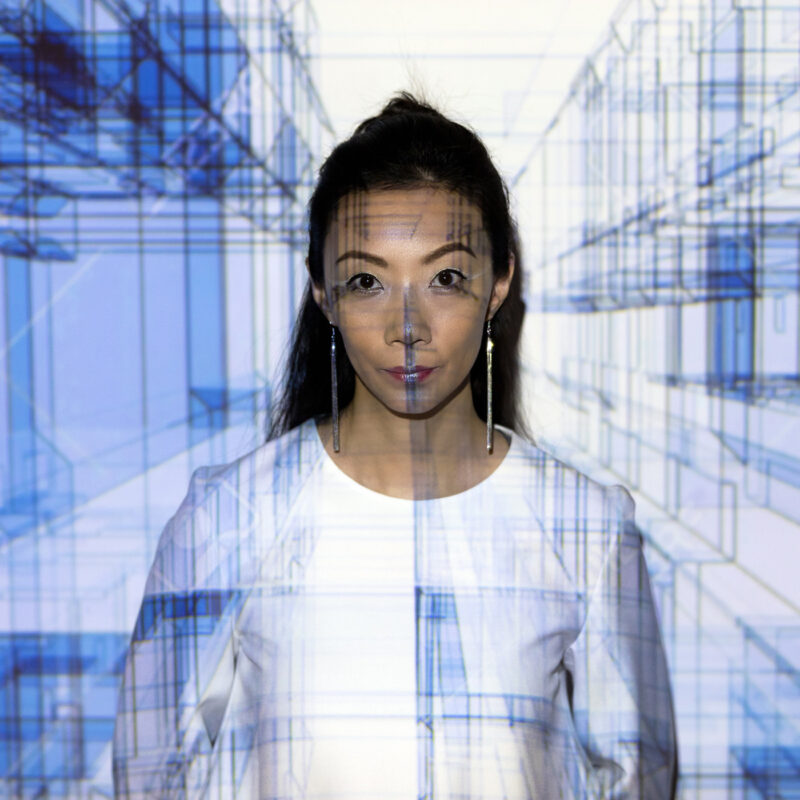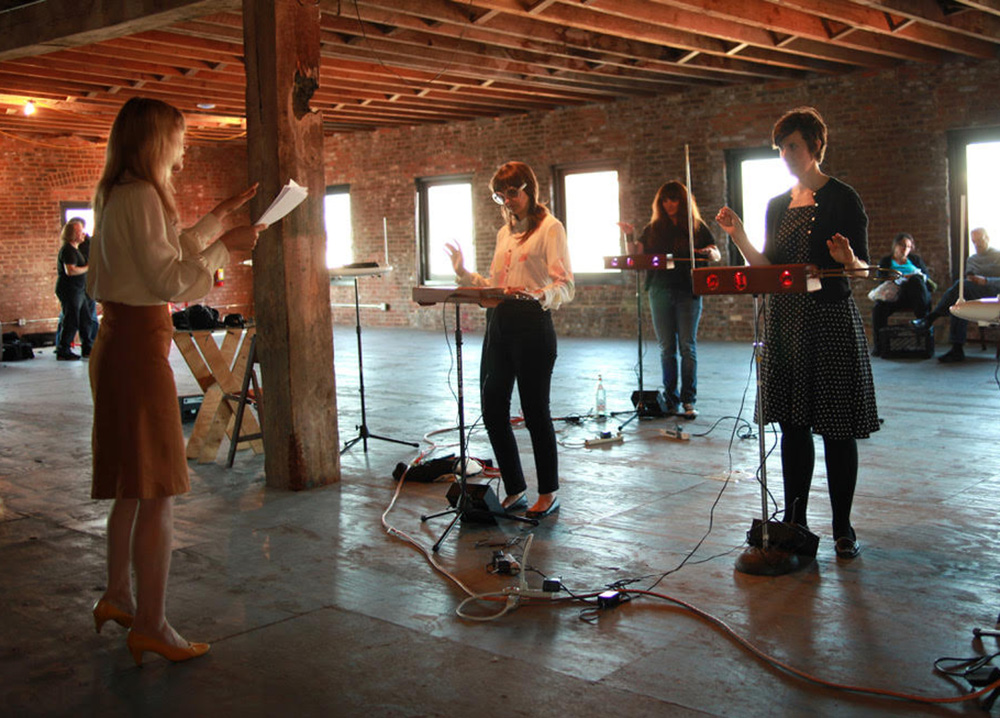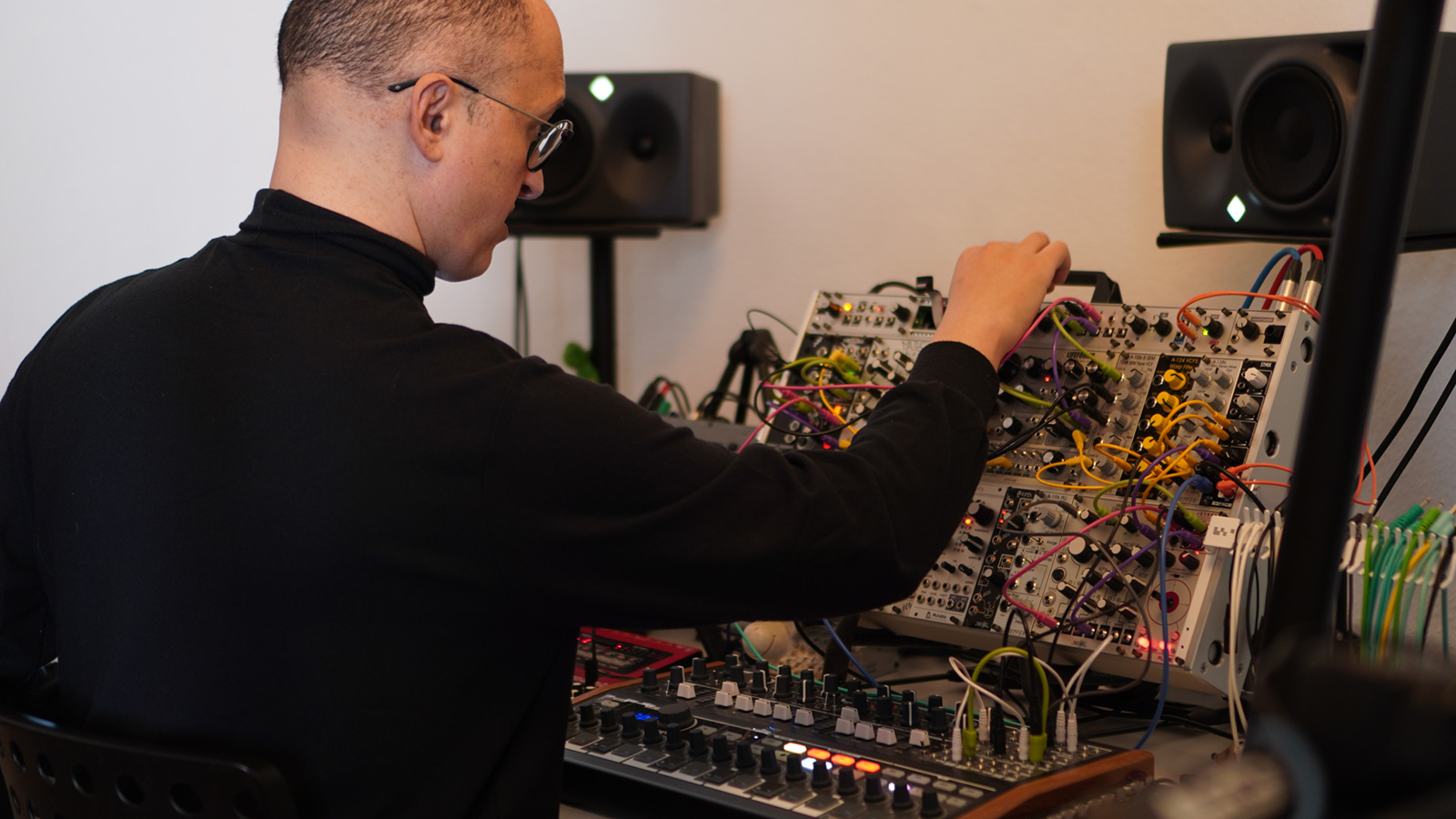FILM UND SOUNDBAR
1.—4. Juli 2021 / 18 – 24 Uhr / Saal
Portrait: Annea Lockwood – A Film About Listening
(2021, DE)
directed by Sam Green (US)
Sisters with Transistors – Electronic music’s unsung
Heroines (2020)
a feature documentary by Lisa Rovner
feat. Clara Rockmore, Daphne Oram, Bebe Barron, Pauline Oliveros, Delia Derbyshire, Maryanne Amacher, Éliane Radigue, Suzanne Ciani, and Laurie Spiegel. – Narrator: Laurie Anderson
RAW CHICKS. BERLIN (2017)
feat. Kritzkom, Ksen. / Tomislav, Kyoka, Mimicof / Midori Hirano, Marta Zapparoli
Regie: Beate Kunath – Raw Chicks
Filmportraits
Beatriz Ferreyra (2017), Elisabeth Schimana (2018), Éliane Radigue (2009), Electric Indigo (2015), Maryanne Amacher (2013)
IMAfiction – Institut für Medienarchäologie
Soundbar – Heroines of Sound Selection 2021
Portrait: Annea Lockwood – A Film About Listening by Sam Green
“Wenn man Annea Lockwood kennt, weiß man, dass sie ein liebenswerter Geist und eine großartige Muse ist. Wenn man sie nicht kennt – ist dies eine gute Einführung. Sie ist eine der klügsten Köpfe in Sachen Klang und Hören. Sie macht seit mehr als 50 Jahren fantastische Musik, Klangkunst und Performances. Und sie ist ein zutiefst warmer und großzügiger Mensch. Der Versuch Kino über Klang zu machen, war eine große kreative Herausforderung.”
– Sam Green
Sam Greens intimes Porträt der wegweisenden experimentellen Komponistin und Musikerin Annea Lockwood gibt einen Einblick in die fesselnde Welt der Klänge, die sie seit vielen Jahren schafft und erforscht. In Auftrag gegeben von Counterflows 2021.
“If you know about Annea Lockwood, you know that she’s a lovely spirit and great muse. If you don’t know her – this is a good intro. She’s one of the smartest people about sound and listening out there. She’s made fantastic music, sound art, and performance for more than 50 years. And she’s a profoundly warm and generous person. It was a great creative challenge to try to make cinema about sound.”
– Sam Green
Sam Green’s intimate portrait of pioneering experimental composer and musician Annea Lockwood gives a glimpse into the enthralling world of sound that she has been creating and exploring for many years. Commissioned for Counterflows 2021.
USA, 2021 // Copyright The Free History Project, 2021 // Directed by Sam Green // Produced by Evan Neff, Josh Penn, Nora Wilkinson // Cinematography by Yoni Brook, Derek Howard // Location Sound by Sean O’Neil // Sound Mix by Rich Bologna // Color by Ayumi Ashley // Animation and Design by Work-Order // Footage Research by Lewanne Jones // Production Assistance by Teresa Brock Moneo // Supported by Counterflows and Creative Scotland // language: English – no subtitles // duration: 33 minutes
Sisters with Transistors – Electronic music’s unsung Heroines
Sisters with Transistors widmet sich der bemerkenswerten, unerzählten Geschichte der Pionierinnen der elektronischen Musik. Dokumentiert sind Komponistinnen, die sich elektronische Geräte und ihre befreienden Technologien zu eigen machten, um die heutige Art und Weise des Musikproduzierens und -hörens völlig zu verändern. Mit visionären Frauen, deren radikale Experimente mit Maschinen die Grenzen der Musik neu definierten, arbeitet der Film nun eine neue Geschichte der elektronischen Musik aus. Zu den Protagonistinnen zählen Clara Rockmore, Daphne Oram, Bebe Barron, Pauline Oliveros, Delia Derbyshire, Maryanne Amacher, Éliane Radigue, Suzanne Ciani und Laurie Spiegel. Die Geschichte der Frauen ist weitesgehend ungeschrieben. In der Musik ist das nicht anders.
Sisters with Transistors is the remarkable untold story of electronic music’s female pioneers, composers who embraced machines and their liberating technologies to utterly transform how we produce and listen to music today. The film maps a new history of electronic music through the visionary women whose radical experimentations with machines redefined the boundaries of music, including Clara Rockmore, Daphne Oram, Bebe Barron, Pauline Oliveros, Delia Derbyshire, Maryanne Amacher, liane Radigue, Suzanne Ciani, and Laurie Spiegel. The history of women has been a history of silence. Music is no exception.
Narrator: Laurie Anderson // Director: Lisa Rovner France, United Kingdom, 2020 // 85 min // English OV with English subt.
RAW CHICKS. BERLIN
5 Portraits – excerpts of RAW CHICKS.BERLIN
Kritzkom (France, Berlin) // www.kritzkom.com
KSEN. // Tomislav (Croatia, Berlin) // www.ksenijaladic.com
KYOKA (Japan | Berlin) // www.ufunfunfufu.com
Mimicof // Midori Hirano (Japan, Berlin) // midorihirano.com
Marta Zapparoli (Italy, Berlin) – additional portrait //
martazapparoli.blogspot.com
The documentary RAW CHICKS.BERLIN shows eleven multifaceted portraits of international Berlin-based female music producers with a focus on live acts; women who come on stage with their equipment and present their own songs and compositions. The musical spectrum ranges from experimental via noise-based electronic to electroacoustic music. Director Beate Kunath gives an insight into the diverse and lively current music scene of Berlin and creates through the presentation of these artists a time document, which supplements the often male-dominated historiography by a female perspective.
Germany 2017 // Director: Beate Kunath
Filmportraits – IMAfiction
IMAfiction ist eine Videoportrait-Serie von IMA Institut für Medienarchäologie (AT)
portrait #09 Beatriz Ferreyra
Interview: Nathalie Singer // Kamera: Reinhard Mayr // Schnitt: Reinhard Mayr // Music: Beatriz Ferreyra // Sound editing: Robert Eder // gedreht in: Hameau de Hodeng, Normandie, cottage of Beatriz Ferreyra // Film format: 16:9 // language : Franz sisch // subtitel German, English// duration : 31 min // IMA 2017 produced by IMA
“I didn’t have anything. I didn’t have a doctorate, I wasn’t a master. I didn’t have any diploma. Nothing. I was nothing. I had only my ears – that’s all.”
– Beatriz Ferreyra.
Ferreyra nutzt für ihr Komponieren die Technik des Perspektivwechsels, die ihr von Pierre Schaeffers Konzept des reduzierten Hörens vertraut ist: Man nimmt den Klang als solchen, nicht als Effekt oder Indiz von etwas anderem wahr. Von Nadja Boulanger hat sie hingegen gelernt, genau zu sein und Unstimmigkeiten auf die Spur zu kommen: Sobald sie beim Hören einer Passage auf andere Gedanken kommt, nicht mehr bei der Sache ist, weiß sie, etwas ist nicht in Ordnung. Für Ferreyra ist Musik etwas, das der persönlichen Energie eines Menschen sehr nahe kommt. Sie selbst sieht und hört Farben und Klänge zusammen und dachte lange, jeder verfüge über diese Fähigkeit zur synästhetischen Wahrnehmung. Das Komponieren ist für Ferreyra ein körperlicher Prozess, bis heute vermisst sie die manuelle Arbeit mit dem Analogmedium, die sie aufgab, als sie mehr oder weniger alle Möglichkeiten des Tonbands kannte. Jeder bei Groupe de recherches musicales (GRM) hatte im Umgang mit den Tonbändern seinen ganz persönlichen, unverwechselbaren Stil; dagegen ist die Arbeit am Computer, mit Maus und Tastatur etwas Abstraktes, körperlichen Kontakt mit den Klängen gibt es seitdem für sie nur noch beim Aufnehmen mit dem Mikrophon. Sie selbst komponiert sehr intuitiv, oft kann sie nicht sagen, wie eine Tonfolge, die sie tags zuvor gefunden hat, entstanden ist. Sie hat keine Regeln. “Es funktioniert oder nicht”, sagt sie. Lange Zeit fehlen ihr die Strategien, um den kompositorischen Prozess zu steuern. Anfangs sucht sie sich Themen, assoziiert dazu Emotionen, Töne oder Farben. Mit “Médisances” (1968) befreit sie sich so von den Erinnerungen an boshafte tuschelnde Leute in Córdoba. Doch ihre musikalische Phantasie benötigt größere Freiräume. Allmählich begreift sie, dass sie bei jedem neuen Stück zuerst eine innere Haltung finden muss. Manchmal dauert es Tage, bis sie zu einer inneren Stille findet, aus der etwas in ihr aufsteigt, aus ihren Träumen oder aus dem Alltag. Seit “Canto del Loco” (1974) fällt ihr diese intuitive Vorgehensweise leicht. Damals beanspruchte sie nicht nur für den Loco, den Narren, sondern auch für sich selbst alle Freiheiten. Inzwischen kann alles, egal ob Bild, Klang, Farbe oder Form, am Beginn ihres assoziativen Komponierens stehen. (Sabine Sanio)
portrait #10 Elisabeth Schimana
Interview & Kamera: Seppo Gründler & Johanna Moder // Film & sound editing: Seppo Gründler // Technical assistance: Chistoph Neuhold // Musik: Elisabeth Schimana // gedreht in: studio Elisabeth Schimana, studio FH Joanneum 2018 // Dauer: 34 Minuten
Die Pionierin Elisabeth Schimana: Mit interdisziplinären und performativen Projekten, Klanginstallationen und Radioarbeiten, Versuchsanordnungen im sozialen wie im virtuellen Raum, mit Projekten im Techno-Kontext und Live-Kompositionen in verschiedensten Konstellationen erschließt und bearbeitet sie seit den 1980er Jahren Feld für Feld. “Seit Beginn meiner Arbeit als Komponistin elektronischer Musik beschäftige ich mich mit der Platzierung von Klängen im Raum. Wenn ich hier von Raum spreche, inkludiere ich auch Räume wie den Radioraum oder das Internet. […] versuche mehr, mit dem, was ein architektonischer oder ein anderer Raum als Eigenheit zu bieten hat, zu arbeiten. Dies lässt sich mathematisch nicht berechnen, es muss gehört werden. Ich stelle immer die Frage an den Raum: Was erzählst du mir, wie können wir gemeinsam klingen?” In Live-Elektronik-Projekten lotet Schimana reale Architekturen aus. In “on tesar” (2006-08, mit Cordula Bösze an Flöten) bespielt sie den konkreten, von Architekt Heinz Tesar entworfenen Raum und arbeitet zudem mit dessen architektonisch-poetisch-philosophischen Formeln, die sie in Konzept und Partitur verwandelt.
“Ich denke in Körpern. Ich bin Elektronikerin.”
– Elisabeth Schimana
portrait #04 Éliane Radigue
Ein Portrait von IMA (2009) // Interviews: Cornelia Primosch (ORF), Daniela Swarowsky // Kamera: Sepp Thoma (ORF), Anais Prosaic // Schnitt: Elena Tikhonova, Anais Prosaic // Tonaufnahme: Henry Roux (ORF) // Sound editing: Elisabeth Schimana gedreht in: Paris // Format: 4:3 // Sprache: Französisch // Untertitel: Englisch, Deutsch // Dauer: 15 Minuten
Seit den 60er Jahren komponiert Éliane Radigue elektronische Musik. Sie zählt zu den bedeutendsten und innovativsten Komponistinnen des 20. Jahrhunderts. Als einzige französische Komponistin ihrer Generation kann Radigue sowohl als Pionierin der elektronischen Musik als auch der Minimal Music bezeichnet werden. Ihre Musik gleicht einem langsamen Strom, der sich durch dichte, kaum wahrnehmbare Klangveränderungen bewegt. Eine zeitlose Architektonik tiefgehender Klänge, die nicht nur den Verstand oder das Hören ansprechen, sondern den ganzen Körper. Eine Musik, die einen mitreißt, sobald man in sie eintaucht. Eine Musik, die die enorme Subtilität von Meeresrauschen besitzt. — Emmanuel Holterbach (Übersetzung aus dem Englischen: Gina Mattiello)
portrait #08 Electric Indigo
Interview: Michaela Schwentner // Kamera: Michaela Schwentner, Andreas Gockel // Gedreht: in Berlin, Wien, Leipzig und in Zügen von Berlin nach Leipzig und zurück, 2015 // Schnitt: Michaela Schwentner // Musik: Electric Indigo // Soundediting: Robert Eder // Übersetzung der Untertitel: Kimi Lum // Format: 16:9 // Sprache: Deutsch Untertitel: Englisch // Dauer: 22 Minuten
Susanne Kirchmayr aka Electric Indigo, seit 1989 aktiv als DJ, Komponistin und Musikerin. 1993-96 lebte sie in Berlin, wo sie im legendären Hardwax Plattenladen arbeitete. 1998 gründete sie das Netzwerk female:pressure, 2009 ausgezeichet mit einer Honorary Mention beim Prix Ars Electronica. Weithin anerkannt als Techno-DJ und Musikproduzentin transformiert Electric Indigo eine äußerst abstrakt gestaltete Tanzmusik in elektronische Musik, die, vom Techno kommend, zu ganz ähnlichen Ergebnissen gelangt wie die akademische elektronische Musik. In ihrer Musik legt die Künstlerin großen Wert auf die gezielte räumliche und zeitliche Platzierung elektronischer Klänge. In Kompositionen wie “Morpheme” (Kompositionsauftrag für die Heroines of Sound 2014) wird Sprache mittels Granularsynthese desintegriert, reorganisiert und in komplexe rhythmische Strukturen gebracht. Als Komponistin erhielt sie 2012 den outstanding artist award beim Prix Ars Electronica in der Sparte Computermusik und elektronische Musik sowie 2013 das österreichische Staatsstipendium für Komposition vom BMUKK. Außerdem erhielt sie u. a. Kompositionsaufträge für Wien Modern und Heroines of Sound. Die Komposition “109.47 Degrees” (2014) wurde 2015 im Rahmen der Heroines Editions in Istanbul uraufgeführt. Ihre neueste Komposition “Barry Duffman” hatte beim Wien Modern Festival im November 2015 Premiere. 2016 leitete Electric Indigo bei den Darmstädter Ferienkursen für Neue Musik einen Workshop zur Granularsynthese.
portrait #06 Maryanne Amacher
Ein Portrait von Elisabeth Schimana & Lena Tikhonova (2013) Interviews und Fieldrecordings: Elisabeth Schimana // Kamera und Schnitt: Elena Tikhonova // Schnittassistenz: Olga Pohankova // Musik: Maryanne Amacher // Sound editing: Elisabeth Schimana, Robert Eder // gedreht in: Wien, Berlin und Kinston N.Y. // Format: 16:9 Sprache: Englisch, Deutsch // Untertitel: Deutsch, Englisch // Dauer: 30 Minuten
Maryanne Amacher wurde 1938 in Kane PA geboren. Sie studierte mit George Rochberg und Karlheinz Stockhausen an der Universität von Pennsylvania. Am SUNY-Buffalos Center of the Creative and Performing Arts gründete sie ihre berühmte telematische City Link Series (1967-79). Gemeinsam mit Marvin Minskys Triadex Muse begann sie in den 1970er Jahren am MIT’s Center for Advanced Visual Studies Ear-tone-Musik zu entwickeln. Mit “torse” (1977) und “Lecture on the weather” (1975) erarbeitete sie zwei großangelegte Werke mit der Merce Cunningham Dance Company bzw. mit John Cage. Seit den 80er Jahren entwickelte sie Stagings für ihre Arbeiten Ways of Hearing: Diese Mini Sound Series bestimmten damals das dramatische Format von Fernsehserien, die sich über Tage und Wochen entwickelten; die Musik für die Sound-Joined-Rooms-Serien erforschen multiple, sich überschneidende akustische Umgebungen sowie “structure born sound”. Eine Auswahl der Klangcharaktere dieser Serie wurde von Tzadik Records auf zwei CDs veröffentlicht. 2005 erhielt Amacher die Goldene Nica bei der ARS Electronica. Bis zu ihrem Tod 2009 unterrichtete sie im Rahmen des MFA Programms am Bard College in New York. — Bill Dietz, Mica Silver (Übersetzung aus dem Englischen: Sabine Sanio)
SOUNDBAR – Heroines of Sound Collection 2021
Die von den Künstlerinnen und dem Festivalteam kuratierte Heroines of Sound Selection umfasst über 200 Titel, das musikalische Spektrum der Hörstücke reicht von Tapemusik der Musique Concrète über Remixes bis hin zu Sound Art.
u. a.: Maryanne Amacher, Akkamiau, Bebe Barron, Ann Clare, Chaya Czernowin, Alessandra Eramo, Beatriz Ferreyra, Annea Lockwood, Evelyn Saylor, Elisabeth Schimana, Zavoloka.
